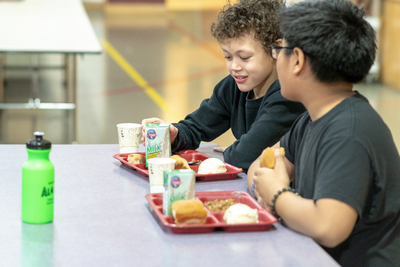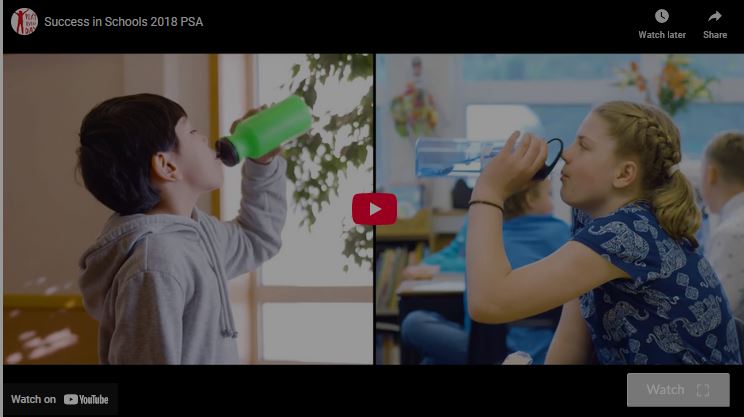Creating Soda-Free Schools
How some Alaska schools started offering healthier drinks, snacks
Creating soda-free schools and smart snack solutions
One way to help children grow up at a healthy weight is to cut back on serving them sugary drinks. Reducing added sugar can lead to many health benefits. It can prevent type 2 diabetes, cavities, unhealthy weight gain, even heart disease.
School districts have been making changes that limit added sugar for hundreds of children who attend their schools.
Creating soda-free elementary and middle schools
North Slope Borough School District, Utqiaġvik and surrounding villages — Years of support from students, families, and athletic booster clubs set the stage for a new change in the North Slope Borough School District during the 2017-18 school year. All elementary and middle schools in this district are soda-free.
Added sugars are in all kinds of foods, from sweet cereals, to granola bars, cookies, cakes and ice cream. But do you know how children get most of their added sugar each day? They drink it. Choosing to cut back on soda is a big step toward reducing unhealthy added sugars in children's diets.
The idea for "soda-free" schools began with North Slope students who wanted to be healthier during sports seasons. High school football and volleyball teams in Utqiaġvik started a "Stop the Pop" pledge to cut out drinking soda during the season. Then more people in the community wanted a change. The athletic booster clubs stopped selling soda at after-school sporting events. Then, a school district policy designated entire school buildings "soda-free." This means soda can't be sold there, provided to students for free, or brought from home.
Following smart snacks and new nutrition standards
Mat-Su Borough School District — Going soda-free is one of many ways to help students learn healthy habits. Some schools are changing their whole snack program to incorporate healthier, low-sugar and whole grain options for their kids.
The Mat-Su Borough School District took action to follow smart snacks standards. This program says that snacks and beverages sold in vending machines, school stores, snack carts, á la carte lines, and for fundraising during the school day need to be nutritious and promote health.
If students want a slice of pizza from the high school's Snack Shack, now it's got a tasty whole wheat crust. The portion size is also smaller — 10 slices per pie compared to the 8 slices they sold before.

School wellness policies
Preventing obesity at an early age can help children maintain a healthy weight later in life. Seventy percent of obese children become obese adults.
One of the best ways to help young Alaskans grow up at a healthy weight is to pass and put in place a strong school wellness policy. This is also known as a student nutrition and physical activity policy. The federal government has long required every school district receiving funds for school breakfast or lunch to have such a policy. Alaska school surveys show a clear relationship between putting in place Smart Snacks nutrition standards and reducing the amount of candy and salty snacks in Alaska schools.
How to support change
This is what Alaska communities are doing to help kids grow up healthy. What can your community do?
For ideas on how to provide healthy foods, drinks, and physical activity for kids, return to:
Success in Schools